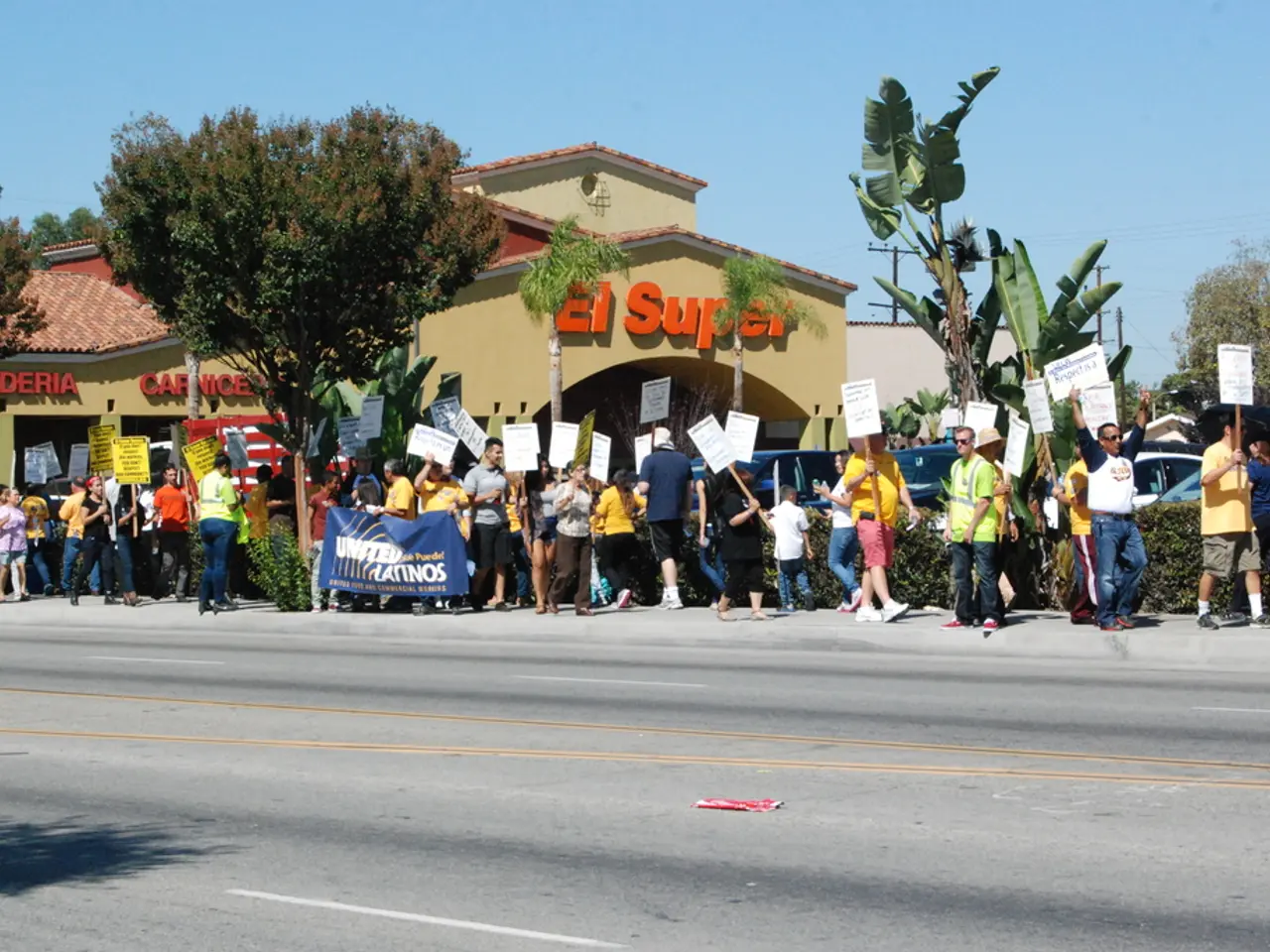Challenges Faced in Crafting Politically Relevant Questionnaires
Political surveys are a powerful tool for shaping election strategies and understanding public opinion. These quick polls, designed to gather feedback from the public, can influence voter perception, momentum, and even trigger bandwagon effects.
The Purpose of Political Surveys
At their core, political surveys aim to gather information that will help create an effective election strategy. This involves focusing on specific insights the campaign needs, such as issue prioritization, voter segmentation, or messaging resonance.
Best Practices for Designing Political Surveys
To ensure the resulting data is reliable, valid, and representative for accurate political analysis and decision-making, it's essential to follow best practices when designing political surveys. Here are some key principles:
- Representative Sampling: Use methods like Registration Based Sampling (RBS) to ensure the survey sample reflects the target population, e.g., national registered voters, controlling for key demographics like age, gender, region, and ethnicity.
- Concise and Focused Surveys: Keep surveys concise, ideally with around 5–10 clear and concise questions. Mix question types to balance depth and respondent engagement and reduce dropout rates.
- Avoid Double-Barreled Questions: Ask about each concept separately to improve data clarity and precision.
- Unambiguous, Neutral Questions: Write questions that avoid biased or leading wording and do not contain double negatives. Use simple, specific language and define terms as needed.
- Manageable Response Options: Limit response options to manageable lists, avoiding long lists that require scrolling, especially on mobile devices.
- Adaptive, Responsive Designs: Use designs that intelligently adjust layout and interaction based on the respondent’s device type and screen size.
- Pretesting: Conduct a pilot survey with a small group to identify confusing questions and technical issues before launching a political survey.
- Ensure Anonymity and Optimize Timing: Increase honesty and response rates by ensuring anonymity and surveying at optimal times, such as in the evening for working adults.
- Control for Mode Effects: Select appropriate survey methods, such as telephone surveys with Computer-Assisted Telephone Interviewing (CATI), online surveys, or omnibus surveys, each with distinct logistical considerations and sampling approaches tailored to the research goals.
- Avoid Bias: Maintain best practices in scale construction, using consistent and exhaustive, mutually exclusive response options (e.g., Likert scales), and be aware of response biases like social desirability or acquiescence bias that can affect political survey responses.
Common Mistakes to Avoid
Common mistakes in designing political surveys include unclear questions, non-representative samples, ignoring margin of error, overloading respondents, and using leading questions. These errors can skew results and reduce credibility.
Analyzing Political Survey Data
Once the data is collected, use statistical analysis to identify trends, cross-tabulations to compare groups, and data visualization for presentations. Open-ended questions can be helpful for exploring detailed opinions and discovering new themes or language used by voters.
Conclusion
By following best practices and avoiding common mistakes, political surveys can provide valuable insights for campaign strategies and help shape the course of elections. Popular platforms for conducting political surveys include Google Forms, SurveyMonkey, Typeform, and dedicated political survey tools like Civis or Qualtrics. To ensure ethical use of political surveys, maintain respondent anonymity, disclose sponsorship if needed, and avoid manipulating results to mislead the public.
- To shape a strong election strategy, a campaign should focus on specific insights gathered from political surveys, such as issue prioritization, voter segmentation, or message resonance.
- For reliable survey data, follow best practices like representative sampling, concise questioning, unambiguous and neutral language, manageable response options, adaptive designs, pretesting, and controlling for mode effects.
- Politicians can benefit greatly from consulting services that offer expertise in designing effective political surveys.
- Avoid common mistakes in political surveys, like unclear questions, non-representative samples, overlooking the margin of error, overloading respondents, and using leading questions.
- Political surveys are fundamental to understanding the education and self-development interests, personal-growth needs, and mindfulness practices of voters.
- Clarity in question wording is essential to prevent war and conflicts beliefs from being misconstrued or misrepresented.
- Data from political surveys can help inform career-development goals, productivity strategies, and policies and legislation related to job-search efforts.
- In the realm of car accidents, elections, and general news, political surveys can shed light on public opinion, helping shape journalist's focus and reporting.
- Crime and justice-related issues are ripe for exploration through political surveys, generating insights into public perceptions on hot-button topics like law enforcement, rehabilitation, and incarceration.
- Political surveys can serve as catalysts for discussions about accident prevention, fires, and emergency response initiatives, helping boost lifelong learning and skills-training programs.
- Setting goals for productivity and career development becomes more informed when policymakers consider the results of political surveys.
- Government bodies, businesses, and individuals can employ political surveys to advance lifelong learning and foster a culture of continuous education through online courses and job-search resources.




